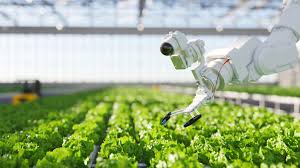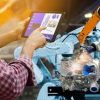Farm automation technology
Farm Automation Technology: Transforming Modern Agriculture
Introduction
Farm automation technology, also known as smart farming or agri-tech, is revolutionizing traditional agricultural practices by introducing intelligent machines and digital solutions. As the global demand for food rises and labor shortages continue to challenge the agricultural sector, automation provides a sustainable way to increase productivity, reduce costs, and enhance efficiency.
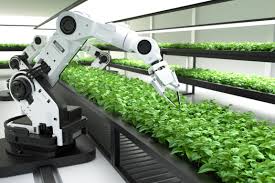
What Is Farm Automation technology?
Farm automation technology refers to the use of advanced technologies to automate various agricultural operations. These technologies include:
-
Autonomous tractors and machinery
-
Drones and aerial imagery
-
IT (Internet of Things) sensors
-
AI-powered data analytics
-
Automated irrigation systems
-
Robotic harvesters
Farm automation technology in farming helps minimize human intervention in tasks such as planting, watering, harvesting, crop monitoring, and pest control.
Key Technologies in Farm Automation technology:
1. Autonomous Tractors and Machinery
Self-driving tractors and combines are equipped with GPS, sensors, and AI systems to perform tilling, seeding, and harvesting with minimal human oversight. These machines can work 24/7 and improve precision and fuel efficiency.
2. Drones and Satellite Imaging
Drones capture high-resolution images and monitor crop health, soil conditions, and pest infestations. Satellite data also supports large-scale agricultural decision-making by providing climate and field condition insights.
3. IT and Smart Sensors
IT devices track soil moisture, temperature, humidity, and nutrient levels in real time. These sensors enable precision agriculture, allowing farmers to apply water, fertilizers, and pesticides only where needed.
4. Robotics and AI
Robotic systems can identify ripe produce, harvest crops, and even weed fields. AI algorithms analyze data from sensors and drones to predict crop yields, detect diseases early, and recommend actions.
5. Automated Irrigation Systems
Smart irrigation systems use data from soil sensors and weather forecasts to manage water use effectively, reducing waste and improving crop yield.
Benefits of Farm Automation technology:
-
Increased Efficiency: Machines can perform tasks faster and more accurately than humans.
-
Cost Reduction: Lower labor costs and optimized resource use save money.
-
Better Yields: Precision agriculture helps improve crop quality and productivity.
-
Sustainability: Reduced pesticide and fertilizer use contributes to environmental protection.
-
Real-Time Monitoring: Constant data feedback allows quick decision-making and problem resolution.
Challenges and Considerations
-
High Initial Investment: Many farm automation systems are expensive to implement.
-
Technical Knowledge: Farmers need training to operate and maintain automated systems.
-
Data Privacy: Secure data management is crucial as farms rely more on digital solutions.
-
Rural Connectivity: Automation depends on internet access, which can be limited in remote areas.
Future of Farm Automation technology:
The future of agriculture lies in full-scale automation. Innovations like swarm robotics, blockchain for traceability, and machine learning will further enhance farming operations. Governments and private sectors are investing heavily in research and development to make farm automation more accessible and s cal able.
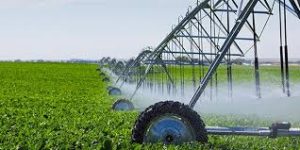
Types of Farm Automation Technology:
Farm Automation technology refers to the use of control systems, machines, and software to operate processes with minimal human intervention. It improves efficiency, accuracy, safety, and speed. There are several types of automation, each serving different needs and industries.
1. Fixed (Hard) Automation
Definition:
Fixed automation is designed for high-volume production. The equipment is configured to perform a specific task, and changes are difficult or impossible without significant re-engineering.
Examples:
-
Assembly lines in car manufacturing
-
Bottling plants
-
Textile machinery
Advantages:
-
High production speed
-
Low unit cost at scale
Limitations:
-
Inflexible
-
High initial cost
2. Programmable Automation
Definition:
This type of automation allows machines to be reprogrammed to handle different tasks. It’s ideal for batch production.
Examples:
-
C N C (Computer Numerical Control) machines
-
Robotics used in electronics
-
Automated textile looms
Advantages:
-
Suitable for varying product designs
-
More flexible than fixed automation
Limitations:
-
Downtime during reprogramming
-
Costlier than fixed automation per unit
3. Flexible (Soft) Automation
Definition:
Flexible automation is a step above programmable automation. It enables real-time changes and quick adaptation to different tasks or product types without stopping the entire system.
Examples:
-
Industrial robotic arms
-
Smart factories
-
Automated guided vehicles (AGV)
Advantages:
-
Highly adaptable
-
Efficient for varied, low-volume production
Limitations:
-
Expensive setup
-
Requires sophisticated control systems
4. Industrial Automation
Definition:
This covers automation in industrial settings, typically involving a combination of hardware and software to monitor and control machinery.
Technologies involved:
-
P L C (Programmable Logic Controllers)
-
S C A D A (Supervisory Control and Data Acquisition)
-
H M I (Human-Machine Interface)
Applications:
-
Oil & gas
-
Manufacturing
-
Energy management
5. Office Automation
Definition:
Office automation uses computer systems and software to carry out administrative and office tasks.
Examples:
-
Email systems
-
Document management
-
Data entry automation (using R PA – Robotic Process Automation)
6. Home Automation (Smart Home Technology)
Definition:
Home automation systems allow homeowners to control devices and systems remotely or automatically.
Examples:
-
Smart lighting and thermostats
-
Voice assistants (Ale x a , Google Assistant)
-
Security systems and door locks
7. Agricultural Automation (Agri-Tech)
Definition:
This refers to automation in farming and agriculture to improve productivity and reduce manual labor.
Examples:
-
Drones for crop monitoring
-
Automated irrigation systems
-
Robotic harvesters
-
Soil sensors
8. Building Automation
Definition:
Building automation systems (B A S) control the mechanical and electrical systems in buildings.
Examples:
-
H V A C systems
-
Fire alarms
-
Lighting systems
-
Access control systems
9. Robotic Process Automation (R PA)
Definition:
R PA uses software robots (bots) to automate repetitive, rule-based tasks typically done by humans in digital environments.
Examples:
-
Invoice processing
-
Customer data entry
-
HR and payroll automation
10. Artificial Intelligence (AI) and Machine Learning (ML)-Based Automation
Definition:
AI-powered automation uses algorithms to learn and make decisions based on data.
Examples:
-
Chat bots
-
Predictive maintenance
-
Autonomous vehicles
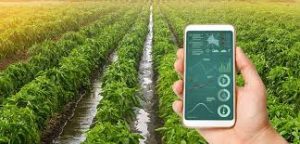
Technologies Used for Farm Automation technology:
1. Sensors and Actuators
Sensors:
Devices that detect physical inputs from the environment (light, temperature, pressure, motion, etc.).
-
Examples: Proximity sensors, temperature sensors, humidity sensors, pH sensors
-
Purpose: Gather data to trigger automated responses.
Actuators:
Devices that convert control signals into mechanical movement.
-
Examples: Motors, valves, pumps, solenoids
-
Purpose: Carry out physical actions in machinery or systems.
2. Programmable Logic Controllers (P L C)
-
What it does: A digital computer used to automate industrial processes like assembly lines, robotic devices, or machinery.
-
Used in: Manufacturing, automotive, packaging, food processing.
3. S C A D A (Supervisory Control and Data Acquisition)
-
What it does: Software system that collects real-time data from machines and controls operations remotely.
-
Used in: Power plants, water treatment, and oil & gas.
4. Robotics
-
What it does: Uses robotic arms, mobile robots, and automated machines to perform physical tasks.
-
Used in: Manufacturing, agriculture, logistics, and healthcare.
-
Examples: Welding robots in car factories, robotic milking machines on farms.
5. Artificial Intelligence (AI) & Machine Learning (ML)
-
What it does: Enables systems to make intelligent decisions, learn from data, and adapt to new scenarios.
-
Used in: Predictive maintenance, smart farming, customer support, and more.
-
Examples: AI chat bots, self-driving tractors, fraud detection systems.
6. Internet of Things (IT)
-
What it does: Connects machines, sensors, and software via the internet for data sharing and remote monitoring.
-
Used in: Smart homes, smart factories, precision farming.
-
Examples: Smart thermostats, automated irrigation, machine health monitoring.
7. Cloud Computing
-
What it does: Provides storage, computing power, and access to data from anywhere.
-
Used in: Data-driven automation systems for real-time analytics and remote access.
-
Examples: Amazon Web Services (AWS), Microsoft Azure in industrial automation.
8. Computer Vision
-
What it does: Uses cameras and AI to interpret visual data.
-
Used in: Quality control, facial recognition, crop health monitoring.
-
Examples: Identifying defective products on a conveyor belt.
9. Human-Machine Interface (H M I)
-
What it does: Interface for humans to interact with machines (touchscreens, dashboards).
-
Used in: Factory machines, ATM, and smart home devices.
10. Robotic Process Automation (R P A)
-
What it does: Automates repetitive digital tasks using software bots.
-
Used in: Finance, HR, customer service, insurance.
-
Examples: Auto-filling forms, invoice processing, data migration.11. Edge Computing
-
What it does: Processes data locally at the source (edge devices) instead of sending it all to the cloud.
-
Used in: Real-time automation systems where speed is critical.
-
Examples: Automated traffic lights, smart factory systems.
Newest Technology in Farming (2025 Overview)
Modern fa is going through a Farm automation technology is a technological revolution, often called “Smart Agriculture” or “A gr i-Tech.” These innovations use artificial intelligence, robotics, data analytics, and biotechnology to solve long-standing farming challenges.

1. Autonomous Tractors and Machinery
What It Is:
Self-driving tractors and harvesters that use GPS, AI, and sensors to perform tasks without human input.
Benefits:
-
24/7 operation
-
Accurate plowing, seeding, and harvesting
-
Reduces labor dependency
🔹 Example:
-
John Deere’s See & Spray Ultimate: Uses cameras to detect weeds and apply herbicides only where needed.
2. Precision Agriculture
🔹 What It Is:
Uses satellite data, drones, sensors, and AI to apply water, fertilizer, and pesticides only where necessary.
🔹 Technologies Involved:
-
Soil sensors
-
N D V I (Normalized Difference Vegetation Index) from drones
-
Variable Rate Technology (V R T)
🔹 Benefits:
-
Saves resources
-
Increases yield
-
Reduces environmental impact
3. Agricultural Drones and Aerial Imaging
🔹 What It Is:
Drones equipped with multi spectral cameras capture aerial images and videos of crops.
🔹 Uses:
-
Monitoring crop health
-
Mapping fields
-
Identifying pest or disease outbreaks
🔹 Benefits:
-
Real-time surveillance
-
Detects problems early
-
Saves time and labor
4. Robotic Harvesting and Weeding
🔹 What It Is:
Robots that can identify ripe fruits and vegetables and harvest them automatically.
🔹 Examples:
-
Agrobot: Picks strawberries using robotic arms
-
Ecorobotix: A solar-powered weeding robot that targets specific weeds
🔹 Benefits:
-
Reduces labor cost
-
Improves harvesting speed
-
Precision reduces crop damage
5. Artificial Intelligence (AI) and Machine Learning
🔹 What It Is:
AI analyzes huge amounts of farm data to make smarter decisions on planting, irrigation, disease control, etc.
🔹 Uses:
-
Yield prediction
-
Crop rotation planning
-
Pest detection
🔹 Benefits:
-
Data-driven decision making
-
More efficient use of resources
-
Forecasting weather and market conditions

6. Vertical Farming & Hydroponics
🔹 What It Is:
Growing crops in stacked layers (indoor farming), often using hydroponics (soil-less growing) or aeroponics.
🔹 Technologies:
-
LED grow lights
-
Climate control systems
-
Nutrient film technique (N F T)
🔹 Benefits:
-
Year-round production
-
Uses 90% less water
-
Grows food in urban areas
7. Internet of Things (IT) in Agriculture
🔹 What It Is:
Connected devices that collect and share farm data in real-time.
🔹 Examples:
-
Smart irrigation systems
-
Climate monitoring tools
-
Livestock tracking sensors
🔹 Benefits:
-
Better resource management
-
Reduces waste and overuse
-
Improves overall productivity
8. Gene Editing & Biotechnology (CR IS PR)
🔹 What It Is:
CR IS PR and other genetic engineering tools allow for creating disease-resistant, drought-tolerant, and high-yield crops.
🔹 Example:
-
Gene-edited rice that grows in salty water
-
Drought-resistant maize
🔹 Benefits:
-
Improves food security
-
Increases crop resilience
-
Reduces need for chemicals
9. Solar-Powered Agricultural Equipment
🔹 What It Is:
Solar panels power machines like water pumps, drones, or irrigation systems.
🔹 Benefits:
-
Reduces energy costs
-
Promotes sustainable practices
-
Useful in remote, off-grid areas
10. Blockchain for Supply Chain Transparency
🔹 What It Is:
Blockchain stores data securely and transparently for tracing farm produce from farm to table.
🔹 Benefits:
-
-
Food safety and traceability
-
Builds consumer trust
-
Reduces fraud and waste
-
